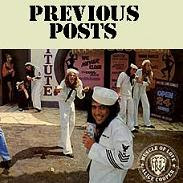Royal Navy Helps To Train Iraq’s New Sailors
Since 2003 a largely unsung and unnoticed Royal Navy team has led the rebuilding of the Iraqi Navy, all of whose ships and small craft were destroyed or disabled during the military, naval and air actions that accompanied the US-led occupation of the country in 2003. Within the next few weeks 32 Iraqi sailors will move to La Spezia in Italy to pick up the first of four 390-tonne Saetta MkIV patrol vessels built by Fincantieri. After training they will sail her 6,000 miles — three times her normal range — to the base at Umm Qasr at the top of the Arabian Gulf. This is a giant leap for an Iraqi naval service that has existed for barely five years and has only operated small craft in home waters. The present Iraqi Navy has never before left the Gulf. As the British officers commanding the naval transition team are all too clearly aware, the Royal Navy’s people are in the country as guests, and require their trainees’ consent to be effective. An early decision was made that the Iraqi Navy should be a secular organisation and this is how it remains — Shias work alongside Sunnis with few problems. Family is crucial and religion plays a central part in their lives. British instructors are full of praise for the courage of the people they train, in an environment where even to be clean-shaven carries a risk. What is the purpose of the Iraqi Navy? It must police and defend Iraq’s coast and territorial rights where the waterway border is in dispute and navigational hazards are considerable. Generating 90 per cent of Iraqi income, the two offshore oil platforms and the Khawr al-Amaya and al-Basra oil terminals must be protected. Iraqi sailors and marines must deter aggression, smuggling and other illegal activities. The Royal Marines have been teaching boarding in what are known as “compliant” and (euphemistically) “non-compliant” scenarios. The US Coastguard trains Iraqi personnel in anti-narcotic operations. Huge progress with shoreside infrastructure has been made under American guidance. All the Royal Navy training staff are keenly aware of the vital necessity for getting out on the water right at the beginning of training and learning the practice of seamanship (as happens at Dartmouth and most other naval academies). Right from the start the philosophy has been: “Put them in a boat for four days and drive around, one has a fighting chance of teaching the theory on day five. Start in the classroom — and there’s no chance.” The “small boat mentor” was a young leading seaman, who taught shiphandling and weapons skills. His humour and language were as salty as one would expect from a sailor who has a practical message to get across — and he was greatly liked by his charges. Delivering today and building for tomorrow is not easy in Iraq. Given the area’s recent history and the devastation that has been visited on it, it is astonishing that anything can be made to work. Administration can be dysfunctional; the prevailing “Insh’allah” (“God willing”) mindset militates against forward planning and systematic engineering maintenance; budget management and logistic support can be difficult. But leadership is being learnt. The present CO of the naval transition team, Captain Phil Warwick, is broadening trainees’ experience and raising their ambitions through voyages in coalition warships and participation in helicopter patrols. “For the first time, the Iraqi personnel are outgrowing their current equipment,” he reports. The new vessels are a modification of the Dicotti class patrol boats already in service with the Italian Guardia Costiera and the Maltese Maritime Squadron. With their offshore patrol capability (they have a range of 2,100 nautical miles at 16 kts) and their complement of four officers and 34 crew, they will add a completely new dimension to the Iraqi naval experience.
Iraqi sailors and marines must deter aggression, smuggling and other illegal activities. The Royal Marines have been teaching boarding in what are known as “compliant” and (euphemistically) “non-compliant” scenarios. The US Coastguard trains Iraqi personnel in anti-narcotic operations. Huge progress with shoreside infrastructure has been made under American guidance. All the Royal Navy training staff are keenly aware of the vital necessity for getting out on the water right at the beginning of training and learning the practice of seamanship (as happens at Dartmouth and most other naval academies). Right from the start the philosophy has been: “Put them in a boat for four days and drive around, one has a fighting chance of teaching the theory on day five. Start in the classroom — and there’s no chance.” The “small boat mentor” was a young leading seaman, who taught shiphandling and weapons skills. His humour and language were as salty as one would expect from a sailor who has a practical message to get across — and he was greatly liked by his charges. Delivering today and building for tomorrow is not easy in Iraq. Given the area’s recent history and the devastation that has been visited on it, it is astonishing that anything can be made to work. Administration can be dysfunctional; the prevailing “Insh’allah” (“God willing”) mindset militates against forward planning and systematic engineering maintenance; budget management and logistic support can be difficult. But leadership is being learnt. The present CO of the naval transition team, Captain Phil Warwick, is broadening trainees’ experience and raising their ambitions through voyages in coalition warships and participation in helicopter patrols. “For the first time, the Iraqi personnel are outgrowing their current equipment,” he reports. The new vessels are a modification of the Dicotti class patrol boats already in service with the Italian Guardia Costiera and the Maltese Maritime Squadron. With their offshore patrol capability (they have a range of 2,100 nautical miles at 16 kts) and their complement of four officers and 34 crew, they will add a completely new dimension to the Iraqi naval experience.
 Iraqi sailors and marines must deter aggression, smuggling and other illegal activities. The Royal Marines have been teaching boarding in what are known as “compliant” and (euphemistically) “non-compliant” scenarios. The US Coastguard trains Iraqi personnel in anti-narcotic operations. Huge progress with shoreside infrastructure has been made under American guidance. All the Royal Navy training staff are keenly aware of the vital necessity for getting out on the water right at the beginning of training and learning the practice of seamanship (as happens at Dartmouth and most other naval academies). Right from the start the philosophy has been: “Put them in a boat for four days and drive around, one has a fighting chance of teaching the theory on day five. Start in the classroom — and there’s no chance.” The “small boat mentor” was a young leading seaman, who taught shiphandling and weapons skills. His humour and language were as salty as one would expect from a sailor who has a practical message to get across — and he was greatly liked by his charges. Delivering today and building for tomorrow is not easy in Iraq. Given the area’s recent history and the devastation that has been visited on it, it is astonishing that anything can be made to work. Administration can be dysfunctional; the prevailing “Insh’allah” (“God willing”) mindset militates against forward planning and systematic engineering maintenance; budget management and logistic support can be difficult. But leadership is being learnt. The present CO of the naval transition team, Captain Phil Warwick, is broadening trainees’ experience and raising their ambitions through voyages in coalition warships and participation in helicopter patrols. “For the first time, the Iraqi personnel are outgrowing their current equipment,” he reports. The new vessels are a modification of the Dicotti class patrol boats already in service with the Italian Guardia Costiera and the Maltese Maritime Squadron. With their offshore patrol capability (they have a range of 2,100 nautical miles at 16 kts) and their complement of four officers and 34 crew, they will add a completely new dimension to the Iraqi naval experience.
Iraqi sailors and marines must deter aggression, smuggling and other illegal activities. The Royal Marines have been teaching boarding in what are known as “compliant” and (euphemistically) “non-compliant” scenarios. The US Coastguard trains Iraqi personnel in anti-narcotic operations. Huge progress with shoreside infrastructure has been made under American guidance. All the Royal Navy training staff are keenly aware of the vital necessity for getting out on the water right at the beginning of training and learning the practice of seamanship (as happens at Dartmouth and most other naval academies). Right from the start the philosophy has been: “Put them in a boat for four days and drive around, one has a fighting chance of teaching the theory on day five. Start in the classroom — and there’s no chance.” The “small boat mentor” was a young leading seaman, who taught shiphandling and weapons skills. His humour and language were as salty as one would expect from a sailor who has a practical message to get across — and he was greatly liked by his charges. Delivering today and building for tomorrow is not easy in Iraq. Given the area’s recent history and the devastation that has been visited on it, it is astonishing that anything can be made to work. Administration can be dysfunctional; the prevailing “Insh’allah” (“God willing”) mindset militates against forward planning and systematic engineering maintenance; budget management and logistic support can be difficult. But leadership is being learnt. The present CO of the naval transition team, Captain Phil Warwick, is broadening trainees’ experience and raising their ambitions through voyages in coalition warships and participation in helicopter patrols. “For the first time, the Iraqi personnel are outgrowing their current equipment,” he reports. The new vessels are a modification of the Dicotti class patrol boats already in service with the Italian Guardia Costiera and the Maltese Maritime Squadron. With their offshore patrol capability (they have a range of 2,100 nautical miles at 16 kts) and their complement of four officers and 34 crew, they will add a completely new dimension to the Iraqi naval experience.



















<< Home